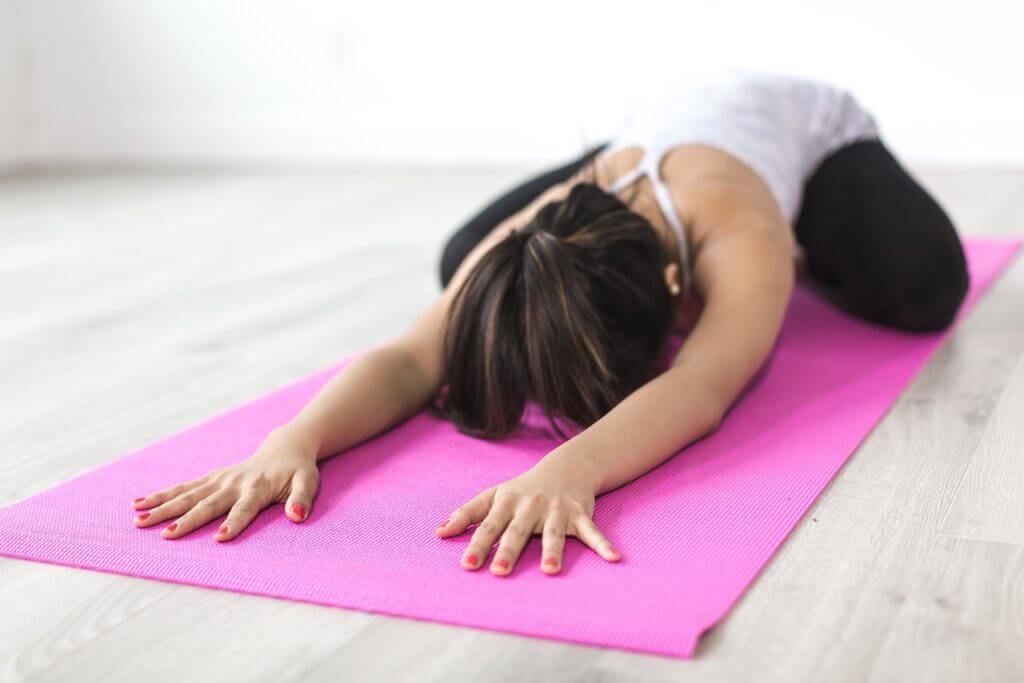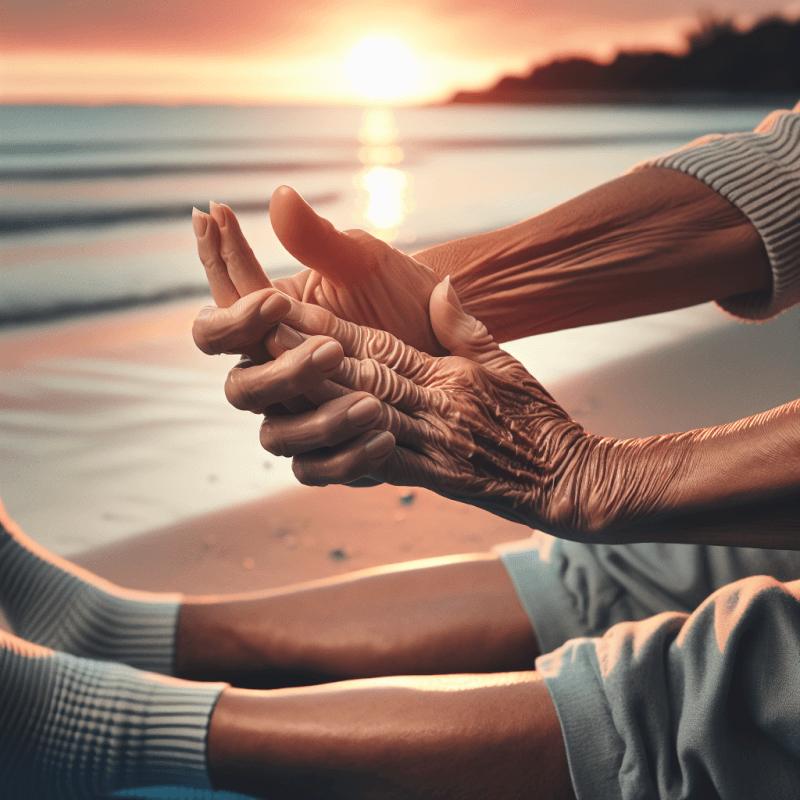As you age, it becomes increasingly important to prioritize your health and well-being. One crucial aspect of maintaining a healthy lifestyle is incorporating proper warm-up and cool-down techniques into your exercise routine. In this article, we will explore the best practices for warming up and cooling down in older age, providing you with valuable tips and advice to help you stay active and injury-free. Whether you are a seasoned athlete or just starting out, implementing these strategies will not only prepare your body for physical activity but also promote overall flexibility and longevity. So let’s dive in and discover the key practices to enhance your exercise routine in older age.
Benefits of Warming Up and Cooling Down
Warming up and cooling down are essential components of any exercise routine, regardless of age. However, as you get older, these practices become even more crucial to ensure a safe and effective workout. By incorporating proper warm-up and cool-down techniques into your exercise routine, you can experience numerous benefits that will help you stay healthy and active as you age.
Improves circulation
One of the significant benefits of warming up and cooling down is improved circulation. When you engage in physical activity, your heart rate increases, and blood flow to your muscles also increases. By warming up before exercising, you gradually increase your heart rate, allowing your circulatory system to adapt to the upcoming demands of the workout. This, in turn, promotes better blood flow and oxygen delivery to your muscles.
Cooling down after exercise helps your circulatory system return to its normal state gradually. As you engage in low-intensity movements, your heart rate gradually slows down, allowing the blood to return more efficiently to your heart and lungs. This process helps prevent dizziness or fainting that may occur if you stop exercising abruptly.
Prevents injuries
Another crucial benefit of warming up and cooling down is injury prevention. As you age, your muscles and joints become less flexible and more prone to injuries. Proper warm-up exercises help prepare your body for the upcoming workout by gradually increasing your body temperature, loosening your muscles, and lubricating your joints. This preparation helps reduce the risk of strains, sprains, and other injuries during exercise.
Cooling down after a workout plays a vital role in preventing injuries as well. During exercise, your muscles tighten and your blood vessels dilate. By engaging in cool-down exercises, such as stretching, you help relax your muscles and promote the removal of waste products, such as lactic acid, which can contribute to muscle soreness and stiffness.
Increases flexibility
Maintaining flexibility is essential as you age to ensure a full range of motion and prevent joint stiffness. Incorporating a comprehensive warm-up and cool-down routine into your exercise regimen helps improve flexibility over time. During the warm-up, gentle movements and dynamic stretches help increase blood flow to your muscles and enhance joint mobility. These activities prepare your muscles and connective tissues for more extensive movements during the workout.
Similarly, during the cool-down phase, static stretches are performed to promote flexibility and lengthen the muscles that may have tightened during exercise. By incorporating regular warm-up and cool-down exercises, you can enjoy increased flexibility, which can lead to improved posture, reduced muscle imbalances, and fewer age-related movement restrictions.
Enhances performance
Last but not least, warming up and cooling down can significantly enhance your overall performance during physical activity. Proper warm-up exercises help activate your muscles, improve coordination, and increase reaction time. By gradually increasing your heart rate and blood flow to working muscles, you prepare your body for the specific movements and demands of the exercise routine.
Cooling down after exercise allows your body to recover more effectively and reduces post-workout muscle soreness. By promoting the removal of waste products and gradually decreasing your heart rate, you decrease the likelihood of muscle cramps and stiffness.
In summary, the benefits of warming up and cooling down are numerous. By taking the time to properly warm up and cool down before and after exercise, regardless of your age, you can improve circulation, prevent injuries, increase flexibility, and enhance overall athletic performance.
Warming Up
Importance of warming up
Warming up before exercise is crucial, especially for older adults. As your body ages, your muscles, tendons, and ligaments become less elastic, making them more prone to injury. Warming up helps prepare your body for the demands of the workout by gradually increasing your heart rate and circulation, raising your body temperature, and loosening your muscles and joints.
Additionally, warming up helps mentally prepare you for the upcoming exercise session. It allows you to focus on your body and the movements you will be performing, ensuring you are ready to engage in physical activity and making the most out of your workout.
Recommended duration
The recommended duration for a warm-up session is typically around 5 to 10 minutes. This timeframe allows your body sufficient time to adapt to the increased demands that will be placed upon it during exercise. However, if you have certain health conditions or limitations, it is essential to consult with a healthcare professional to determine the appropriate duration for your warm-up routine.
Sample warm-up exercises
Some effective warm-up exercises for older adults include walking or marching in place, gentle arm swings, shoulder rotations, and leg swings. These exercises help increase blood flow to your muscles, warm up your joints, and prepare your body for the upcoming workout.
Other warm-up exercises that can be beneficial include standing hip circles, light cardio exercises such as stationary biking or rowing, and bodyweight exercises such as squats or lunges. These exercises can be modified to suit your fitness level and abilities, ensuring a safe and effective warm-up routine.
Remember to start with gentle movements and gradually increase the intensity to avoid straining your muscles or joints. Listen to your body and adjust the exercises as needed to prevent any discomfort or pain.

Cooling Down
Importance of cooling down
Cooling down after exercise is just as important as warming up. Cooling down allows your body to transition from a state of higher intensity to a state of rest gradually. It helps prevent blood pooling in your extremities, reduces the risk of dizziness or fainting, and allows your heart rate to return to its normal resting rate.
Additionally, cooling down promotes the removal of waste products, such as lactic acid, that have accumulated in your muscles during exercise. By engaging in gentle movements and stretching, you can help flush out these waste products and minimize post-workout muscle soreness.
Recommended duration
The recommended duration for a cool-down session is similar to that of a warm-up, typically around 5 to 10 minutes. During this time, you should engage in low-intensity activities that gradually decrease your heart rate and allow your body to recover.
Sample cool-down exercises
Some effective cool-down exercises for older adults include walking or marching in place, slow and controlled arm circles, gentle stretching, and deep breathing exercises. These activities help promote muscle relaxation, prevent stiffness, and allow your body to transition from exercise to rest.
Other cool-down exercises that can be beneficial include yoga or Pilates-based movements that focus on stretching and relaxation. These exercises not only help with flexibility but also provide a sense of calm and relaxation after physical activity.
Remember to avoid any sudden or jerky movements during the cool-down phase. Ease into the stretches and focus on maintaining proper form and breathing deeply to enhance the relaxation and recovery process.
Considerations for Older Adults
As an older adult, it is important to take certain considerations into account when performing warm-up and cool-down exercises. These considerations can help ensure your safety and optimize the benefits you receive from your exercise routine.
Consulting a healthcare professional
Before starting any new exercise routine, it is vital to consult with a healthcare professional. They can assess your overall health and provide guidance on the types and intensity of exercises that are suitable for your specific needs. They can also offer recommendations on warm-up and cool-down exercises that are safe and effective for your age group.
Choosing low-impact exercises
Older adults may have certain health conditions or joint limitations that require them to choose low-impact exercises for their warm-up and cool-down routines. Low-impact exercises, such as walking, swimming, or cycling, are gentler on the joints and can help reduce the risk of injury.
Listening to the body’s signals
It is essential to listen to your body’s signals and adjust your warm-up and cool-down routines accordingly. If you experience any pain, discomfort, or dizziness during or after exercise, it is important to modify or discontinue the activity. Pushing through pain or ignoring your body’s signals can lead to further injury or complications.
Gradually increasing intensity
When incorporating warm-up and cool-down exercises into your routine, it is important to gradually increase the intensity over time. Start with exercises that are comfortable and manageable for your fitness level and gradually progress as your body adapts to the demands of the workout. This gradual progression helps prevent overexertion and reduces the risk of muscle strains or other injuries.

Warming Up Tips for Older Adults
Start with gentle movements
When warming up, it is crucial to start with gentle movements that gradually increase your heart rate and body temperature. This can include activities such as walking in place, marching, or gentle arm swings. These movements help prepare your body for the upcoming exercises without placing excessive stress on your muscles and joints.
Focus on joint mobility
As you age, maintaining joint mobility becomes increasingly important. Incorporating exercises that focus on joint mobility, such as shoulder rotations or standing hip circles, can help improve your overall range of motion and reduce the risk of joint stiffness or pain during exercise.
Incorporate dynamic stretches
Dynamic stretches involve moving your body through a full range of motion and can be an effective way to warm up your muscles and increase flexibility. Examples of dynamic stretches for older adults include leg swings and gentle torso twists. These exercises help increase blood flow to your muscles and prepare them for more extensive movements during the workout.
Include cardiovascular exercises
Adding cardiovascular exercises to your warm-up routine can help increase your heart rate and promote better circulation. This can be as simple as incorporating brisk walking, light jogging, or marching in place to get your heart rate up before starting your main workout.
Recommended Warm-up Exercises for Older Adults
Neck rotations and stretches
Neck rotations and stretches can help improve neck mobility and relieve tension that may build up throughout the day. Simply turn your head slowly from side to side, gently looking over each shoulder, and then tilt your head forward and backward to stretch the muscles in the front and back of your neck.
Arm circles and swings
Arm circles and swings are excellent warm-up exercises for your upper body. Stand or sit with your feet shoulder-width apart and extend your arms out to the sides. Circle your arms forward for several repetitions, gradually increasing the size of the circles. Then, switch directions and circle your arms backward.
To perform arm swings, keep your arms extended out to the sides and swing them forward and backward in a controlled manner. These exercises help warm up your shoulder joints and increase blood flow to your arms.
Leg swings and stretches
Leg swings and stretches are beneficial for warming up your lower body. Stand near a wall or sturdy object for support and swing one leg forward and backward, keeping it straight and engaging your core muscles. Repeat this motion for several swings before switching to the other leg.
Additionally, incorporate gentle stretches such as quadriceps stretches, hamstring stretches, and calf stretches to further warm up your leg muscles.
Hip rotations
Hip rotations are a great warm-up exercise for your hips and lower back. Stand with your feet shoulder-width apart and your hands on your hips. Slowly rotate your hips in a clockwise direction for several repetitions, then switch to a counterclockwise direction.
These warm-up exercises specifically target the muscles and joints that are commonly engaged during exercise, helping to prevent strain or injury.

Cooling Down Tips for Older Adults
Gradually decrease intensity
When cooling down after a workout, it is important to gradually decrease the intensity of your movements. Slowly reduce the pace of your activity, such as walking instead of jogging, to allow your body to transition from exercise to rest more effectively.
Include static stretches
Static stretches are ideal for cooling down as they help relax your muscles, improve flexibility, and promote recovery. Perform stretches by holding a gentle stretch for 15 to 30 seconds, focusing on major muscle groups such as your calves, quadriceps, hamstrings, and chest.
Remember to breathe deeply as you stretch and avoid any bouncing or jerking movements that can strain your muscles.
Practice deep breathing
Deep breathing exercises during the cool-down phase can help promote relaxation and restore your body to a state of calm. Take slow, deep breaths, inhaling through your nose and exhaling through your mouth. This deep breathing technique helps slow down your heart rate and aids in the recovery process.
Use props for support
If you have any mobility limitations or balance issues, it is important to use props for support during cool-down exercises. Consider using a chair, wall, or stability ball for added balance and stability when performing static stretches or other cool-down activities.
By incorporating these cooling down tips into your exercise routine, you can help promote muscle recovery and reduce post-workout soreness or stiffness.
Recommended Cool-down Exercises for Older Adults
Calf stretches
Calf stretches can help relax and lengthen the muscles in your lower legs. Stand near a wall or sturdy object, place one foot behind you, and press your heel into the ground while bending your other knee forward. Hold this position for 15 to 30 seconds, then switch to the other leg.
Quadriceps stretches
Quadriceps stretches target the muscles at the front of your thighs and can be performed either standing or lying down. Stand near a wall or use a chair for support if needed. Bend one knee and grasp your foot or ankle, gently pulling it toward your buttocks until you feel a stretch in the front of your thigh. Hold this position for 15 to 30 seconds, then repeat on the other side.
Hamstring stretches
Hamstring stretches help relax and lengthen the muscles at the back of your thighs. While sitting on the edge of a chair, extend one leg out in front of you with your heel on the floor. Lean forward from your hips, keeping your back straight, until you feel a gentle stretch in the back of your thigh. Hold this position for 15 to 30 seconds and repeat on the other side.
Chest stretches
Chest stretches help counteract the forward shoulder posture that is common in older adults. Stand tall with your feet shoulder-width apart and interlace your fingers behind your back, reaching your arms away from your body. Gently lift your chest and squeeze your shoulder blades together as you hold the stretch for 15 to 30 seconds.
By incorporating these recommended cool-down exercises into your routine, you can promote muscle relaxation and reduce the risk of post-workout muscle soreness.

Common Mistakes to Avoid
Skipping warm-up and cool-down
One of the most common mistakes, regardless of age, is skipping the warm-up and cool-down phases of your workout. These components are essential for preparing your body for exercise and aiding in recovery. Skipping warm-up and cool-down can lead to a higher risk of injury and increased muscle soreness.
Stretching too aggressively
While stretching is an essential part of warming up and cooling down, it is important to avoid stretching too aggressively. Overstretching can lead to muscle strains or tears, especially as you age and your muscles become less flexible. Focus on gentle, controlled stretches and never stretch to the point of pain.
Neglecting balance and stability exercises
As you age, maintaining balance and stability becomes increasingly important. Neglecting balance and stability exercises during your warm-up and cool-down routines can increase the risk of falls and injuries. Incorporate exercises that challenge your balance, such as standing on one leg or using a stability ball, to improve your overall stability and reduce the risk of falls.
Overtraining
Engaging in excessive exercise without giving your body proper rest and recovery time is another common mistake. Overtraining can lead to fatigue, decreased performance, and an increased risk of injury. Make sure to listen to your body and allow yourself enough time to rest and recover between workouts.
By avoiding these common mistakes, you can ensure a safer and more effective warm-up and cool-down routine.
Conclusion
Warming up and cooling down are essential practices for individuals of all ages, especially older adults. By taking the time to properly prepare your body for exercise through a comprehensive warm-up routine, you can improve circulation, prevent injuries, increase flexibility, and enhance your performance during physical activity.
Likewise, cooling down after exercise allows your body to transition from a state of higher intensity to rest gradually. It aids in recovery, prevents blood pooling, and promotes the removal of waste products from your muscles. Incorporating an appropriate cool-down routine into your workout helps reduce post-workout muscle soreness and promotes overall relaxation.
For older adults, it is important to take specific considerations into account when performing warm-up and cool-down exercises. Consulting with a healthcare professional, choosing low-impact exercises, and gradually increasing intensity will help ensure a safe and effective warm-up and cool-down routine.
Remember, by following these best practices for warming up and cooling down, you can enhance your overall exercise experience, improve your physical well-being, and enjoy a healthier and more active lifestyle as you age.



